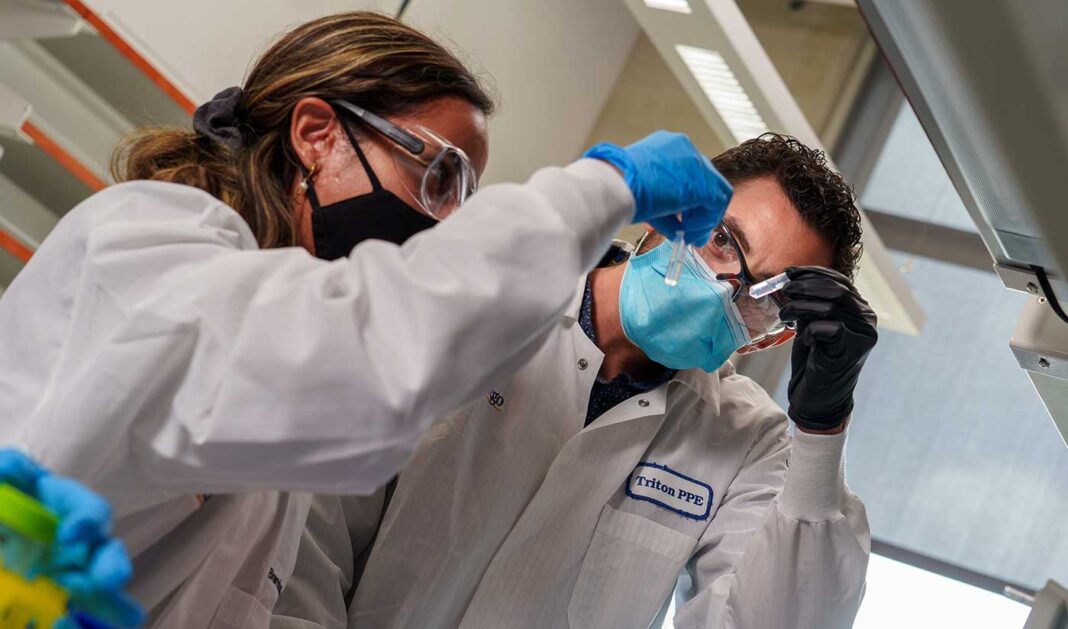As a treatment for carbon monoxide poisoning and chronic wounds associated with gangrene, hyperbaric oxygen therapy, or HBOT, is commonly used. It also helps with conditions where tissues are not deficient in oxygen. If you decide to opt for this method, you must enter a specially-designed space for breathing oxygen at levels one and a half up to three times higher than average. The aim is to supply the blood with enough oxygen to heal tissues and restore bodily function.
Hyperbaric oxygen therapy
The early 20th century saw hyperbaric treatment in the United States. In this period, Orville Cunningham used pure oxygen to treat flu sufferers. He created the hyperbaric chamber before taking it down after other illnesses failed. The procedure was tried again in the 1940s, and it was discovered that the U.S. Navy used hyperbaric oxygen for treating deep-sea divers suffering decompression illnesses. In the 1960s, the treatment was also utilized for treating CO poisoning.
It’s still employed to assist suffering scuba divers and those suffering from CO poisoning. This includes firefighters and miners. It’s also recognized by the FDA to treat more than 12 conditions, such as bone diseases, and burns:
- Carbon monoxide poisoning.
- A poisoning reaction of Cyanide.
- Crush injuries.
- Decompression sickness.
- Efficient blood flow into the arteries.
- flaps and skin grafts that are damaged.
- Bone infection (osteomyelitis).
- Delayed radiation injury.
- The disease that results from eating flesh (also known as necrotizing tissues inflammation).
- Actinomycosis is a long-term chronic disease.
- Diabetic-related wounds that aren’t healing properly.
Medicare, Medicaid, and a variety of insurance companies generally will provide hyperbaric oxygen therapy to treat the above ailments. However, they might not be covered under all situations. Before beginning treatment, make sure to check with your insurance provider.
Forms of hyperbaric oxygen chambers
A hyperbaric oxygen treatment uses two different types of oxygen chambers.
- The Monoplace chamber: It’s a chamber that is designed to fit one person. It’s an elongated, flexible tube that resembles the MRI device’s shape. The patient can enter the chamber. The chamber is then gradually pressurized with 100 ozone.
- Multiplace Chamber: The chamber, or room, can hold two persons at a time. The difference is that they breathe pure oxygen by using masks and Hoods.
You experience it when you watch HBOT
Only a doctor is qualified to prescribe the treatment of hyperbaric oxygen. Many hospitals have a hyperbaric oxygen room. The patients can sit, relax or lie on their backs in these chambers, and inhale deeply during sessions between 2 to 3 hours. Your ears might appear closed when pressure is increased, as it does when you’re flying or hiking in high mountains. Chewing gum or swallowing could restore hearing levels to normal.
Blood supply transports oxygen to your whole body, assisting in replenishing injured tissues that require more oxygen. This helps them begin healing. After the treatment is completed, you could feel a little uneasy. The mild adverse effects can include nausea, claustrophobia, and headaches. A certain number of sessions could be needed in advance. So, make sure you check with your insurance provider if Medicaid or Medicare pays for the cost.
Read More: A Detailed Guide About How Much Does A Truck Driver Make A Week?
Precautions
Hyperbaric oxygen therapy might not be suitable for everyone. It is not recommended for people who have recently undergone an operation on their ear or an injury to the ear or a condition like cold or fever, or any other types of lung ailments.
The most often reported complication following HBOT is an injury to the middle ear. Other potential complications could include eye and sinus injuries. Very rarely are extreme cases, patients may suffer from toxic oxygen levels. It may cause seizures and swelling of the lung and lung, lung issues, and other health problems. When weighing the possible risks and advantages of hyperbaric oxygen therapy, make an informed decision after consulting with your doctor.
Hyperbaric oxygen therapy benefits
- The blood vessels in the body release fluid, which then enters tissues and causes swelling. This swelling deprives damaged cells of oxygen, and tissues fade away. HBOT helps reduce swelling and also saturates tissues with oxygen. HBOT can be a way to stop the process of pain, swelling oxygen, and dying of tissue.
- HBOT prevents “reperfusion injury. ” When tissues are deprived of oxygen after cutting off their blood supply, severe tissue damage results. When blood flow is disrupted because of an injury that is crushing, such as an event within injured cells causes the release of oxygen radicals, which harm our body. These molecules can cause tissue damage that is not reversible and may result in blood vessels being forced to become closed and restrict blood flow. HBOT assists your body’s antioxidants in looking for the responsible molecules and allowing healing to proceed.
- HBOT can neutralize the harmful toxins produced by certain microbes. It also increases the oxygen levels within tissues. This aids in fighting infections. Additionally, it increases the ability of white blood cells to recognize and remove invading organisms.
- HBOT is a stimulant for developing collagen (connective tissue) and new collagen (skin cells). It does so by stimulating blood vessels to grow. They attract and stimulate endothelial cells, which are crucial to healing. Improves oxygenation in the tissues of the body,
- Increase blood circulation and flow of blood.
- White blood cells produce more readily when it is taken.
What are the risks of hyperbaric oxygen therapy?
Hyperbaric oxygen therapy (HBOT) is a medical treatment that involves breathing pure oxygen in a pressurized chamber to increase the amount of oxygen in the body’s tissues. While HBOT is generally considered safe, it does carry some risks that patients should be aware of.
One of the primary risks of HBOT is ear damage. The increased pressure in the chamber can cause discomfort, pain, or even damage to the eardrum. Patients may also experience sinus pain, headache, or tooth pain during or after treatment. These symptoms usually resolve quickly once the pressure is equalized.
Another risk of HBOT is the possibility of lung damage. The increased pressure in the chamber can cause air bubbles in the bloodstream, which can block blood flow and damage the lungs. This is a rare but serious complication that requires immediate medical attention.
In some cases, HBOT can also cause seizures, particularly in patients with a history of seizures or neurological disorders. The risk of seizures can be reduced by carefully monitoring patients during treatment and adjusting the treatment plan as needed.
FAQs
- How does hyperbaric oxygen therapy benefit the body?
HBOT, also known as hyperbaric oxygen therapy, is a treatment that improves healing in conditions such as carbon monoxide poisoning, gangrene, wound infection, and gangrene.
- Why are doctors opposed to hyperbaric oxygen therapy?
As a result of changes in air pressure, there is a risk of middle ear injuries, including fluid leaks and eardrum ruptures. A temporary change in the eye lens causes temporary nearsightedness (myopia) when the lung collapses due to air pressure changes (barotrauma).
- Hyperbaric oxygen has what health benefits?
Although hyperbaric oxygen therapy is generally safe, there is the potential for complications, some of which may prove to be life-threatening and may result in long-term disability.









